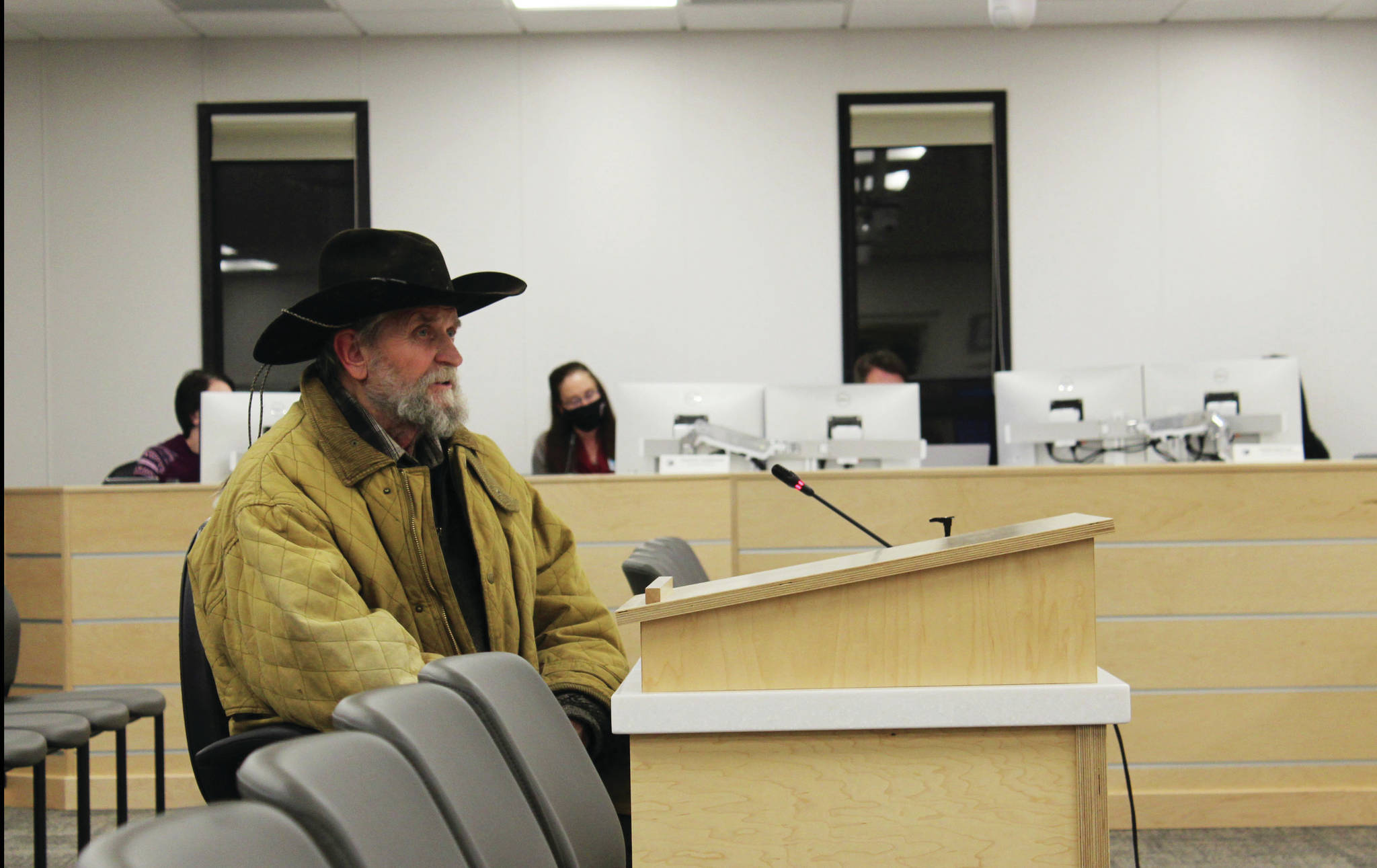The Kenai Peninsula Borough Assembly will vote Tuesday on whether or not to adopt set rates for borough land leased for agricultural purposes as part of a larger attempt to develop the peninsula’s agricultural infrastructure.
The assembly will consider two pieces of legislation: an ordinance that would change borough code to change how land is valued from an assessor to a standard fee schedule and a resolution that would adopt the fee schedule.
Under the fee schedule, leases would be classified as either agricultural or grazing, with eight subcategories into which the land would be classified by type. For example, “Category D,” or managed forestland, refers to land areas that support the production of “forest products” and would cost $2.50 per acre per year.
Because land parcels contain different types of land, yearly leases for chunks of borough land would equal the sum of the different rates multiplied by their respective acreages.
Kenai Peninsula Borough Land Management Officer Marcus Mueller has said that the primary reason the borough is looking to change the process of valuation is because the current system is bad. Currently, the rates are determined by an assessor, which Mueller said can lead to uncertain results due to a lack of market information when it comes to land on the peninsula used for agricultural purposes and because factors used to determine residential land value are not always good indicators of agricultural value.
The proposed rates would only apply to new leases entered into by the borough. Most of the agricultural land lease agreements the borough is currently a part of were inherited by the borough from the state and were originally issued in the 1960s and 1970s.
Robert Gibson, who is the president of the Alaska Land and Cattle Company, is supportive of bolstering agriculture on the peninsula, but thinks that the rates being proposed are too high. In a letter sent to members of the assembly, Gibson notes that a parcel he is interested in is only accessible for six months out of the year due to snow, which should be taken into consideration when rates are determined.
“An item is only worth what someone is prepared to pay for it,” Gibson wrote.
It is possible for the assembly to lower the proposed rates via an amendment to the legislation when they meet on Tuesday.
At the assembly’s Jan. 20 meeting, another farmer, who said he was retired, said that the borough should be sure to work closely with other farmers on the peninsula throughout the development of their larger agricultural initiative, which was first launched in 2018.
Mueller said Friday that the borough solicited letters of interest in the initiative in 2019 and that the initiative has been reviewed by stockholders such as the Kenai Soil and Water Conservation District, the Homer Soil and Water Conservation District, the Kenai Peninsula Farm Bureau and the Kenai Peninsula Borough Resilience and Security Advisory Commission Agriculture Subcommittee among others.
A public comment submitted to the assembly by Homer Soil & Water Conservation District Manager Kyra Wagner said the fee structure is “an important step” for people on the peninsula looking to use borough land for agricultural purposes.
“This price structure, though it will certainly change over the years, is an important first step to ensure fairness and accessibility to land for our Peninsula farmers,” Wagner wrote. “Better than open bids, competitive auctions, or simply a subjective guess on prices, this gives farmers the numbers [they] can use to create a successful business plan for expansion or even just starting a farm.”
The borough has already identified three pieces of land that would be eligible for the program, including two parcels in the Kasilof area and one in the Fox River area, near Razdolna.
A public hearing on the ordinance will be held during the assembly’s meeting on Tuesday. More information on the borough’s agricultural initiative can be found at www.kpb.us/landmgt/kpb-agriculture-initiative.
Reach reporter Ashlyn O’Hara at ashlyn.ohara@peninsulaclarion.com.

